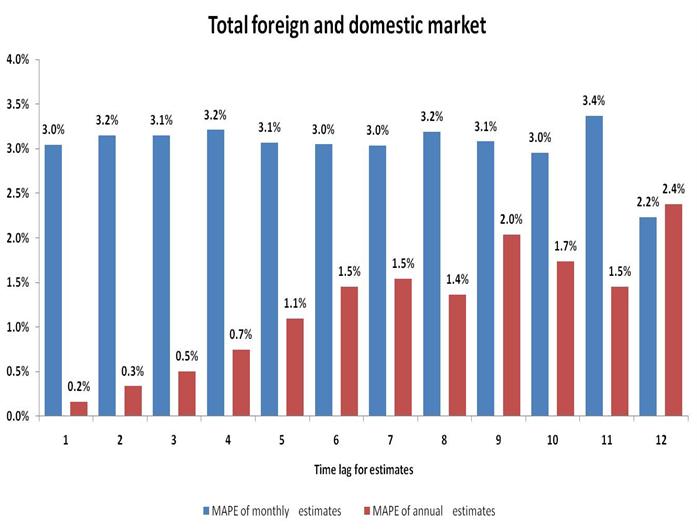Forecasting annual European travel market from early data provided by ECM members

The nature of the tourism industry makes forecasting an important subject for future success. Forecasting is conducted to reduce those risks related to the nature of the industry by predicting the future demand based on historical data.
\n
In a study by MODUL University Vienna, different methods of forecasting were conducted to find out the most accurate forecasting method for predicting annual and monthly tourism demand in Europe based on statistics provided by ECM members on TourMIS. The sample data included 41 European cities and their monthly tourist bednight numbers for the years 2005 until 2009, which included 1,512 observations. Moreover, the data was adjusted for the influence of seasonality which is an important factor for many cities in Europe.
\n
| \n
\n Figure 1. Amsterdam forecasting results (Note: MAPE = Mean absolute percentage error; the smaller the MAPE value, the better the prediction) \n Overall results indicate that forecasting annual values provides more accurate predictions than forecasting monthly values. For forecasting annual estimates, the study shows that the more complete the annual aggregated data is (i.e. the smaller the time lag for estimating the annual value), the better the forecast values. For instance, when we take into consideration Amsterdam, the average percentage error is less than 2% if five months or fewer are missing, and only starts increasing gradually after that time period. These can be seen in Figure 1, with the red columns. Estimating individual months is much more difficult as shown by the blue bars in Figure 1. The average error for predicting monthly data in Amsterdam is between 4 and 7% and depends on how many months someone wants to look into the future. \n
\n The results were even more encouraging when the researchers examined the total number of bednights (foreign and domestic), for a sample of 41 ECM members regularly entering their monthly data into TourMIS (www.tourmis.info). The average percentage errors (MAPE) of annual estimates were less than 2% when only four months of data are available. When predicting individual months, tourism managers are faced with an average error of between 3 and 4%. \n The relatively high accuracy of forecasting annual data based on preliminary monthly results encourages the ECM Benchmarking team to further develop and integrate forecasts in the ECM Annual Benchmarking report. \n For more information on the ECM Benchmarking report, please read https://citydestinationsalliance.eu/listing.asp?cat=6&id=96 \n
\n Pr. Karl Wöber \n Modul University Vienna \n |
\n
\n |
|
\n

 Figure 2. Total foreign and domestic market forecasting results.
Figure 2. Total foreign and domestic market forecasting results.